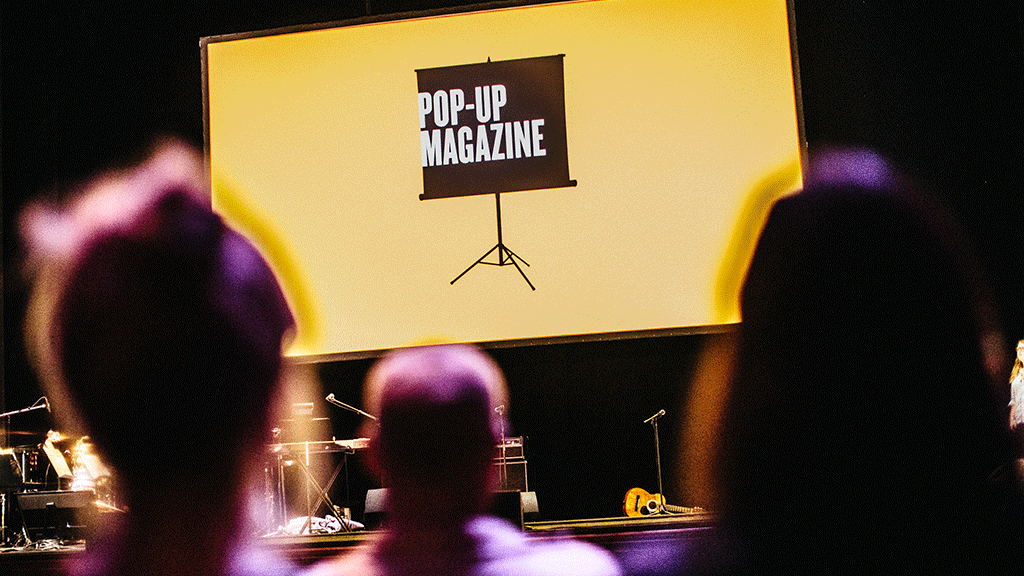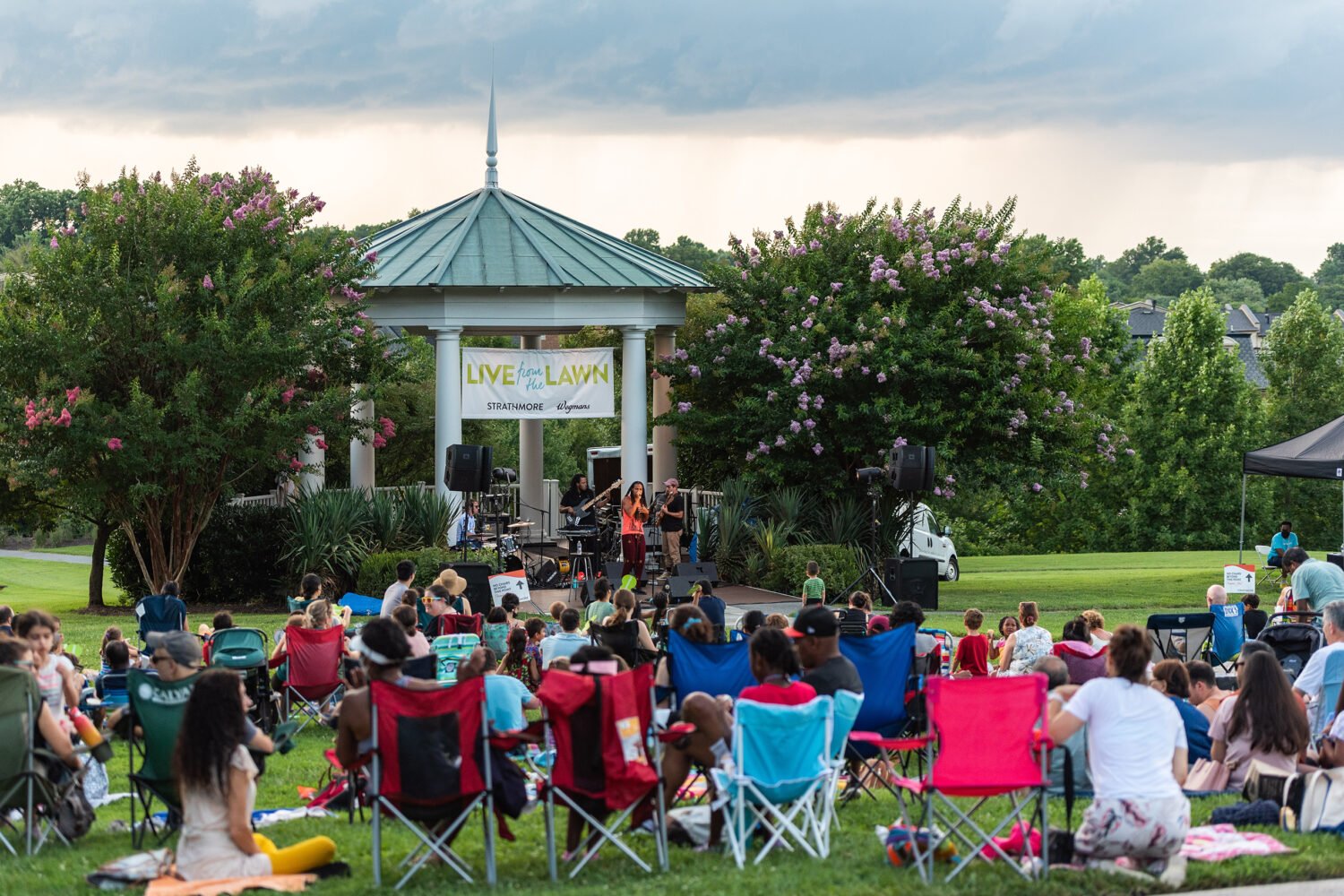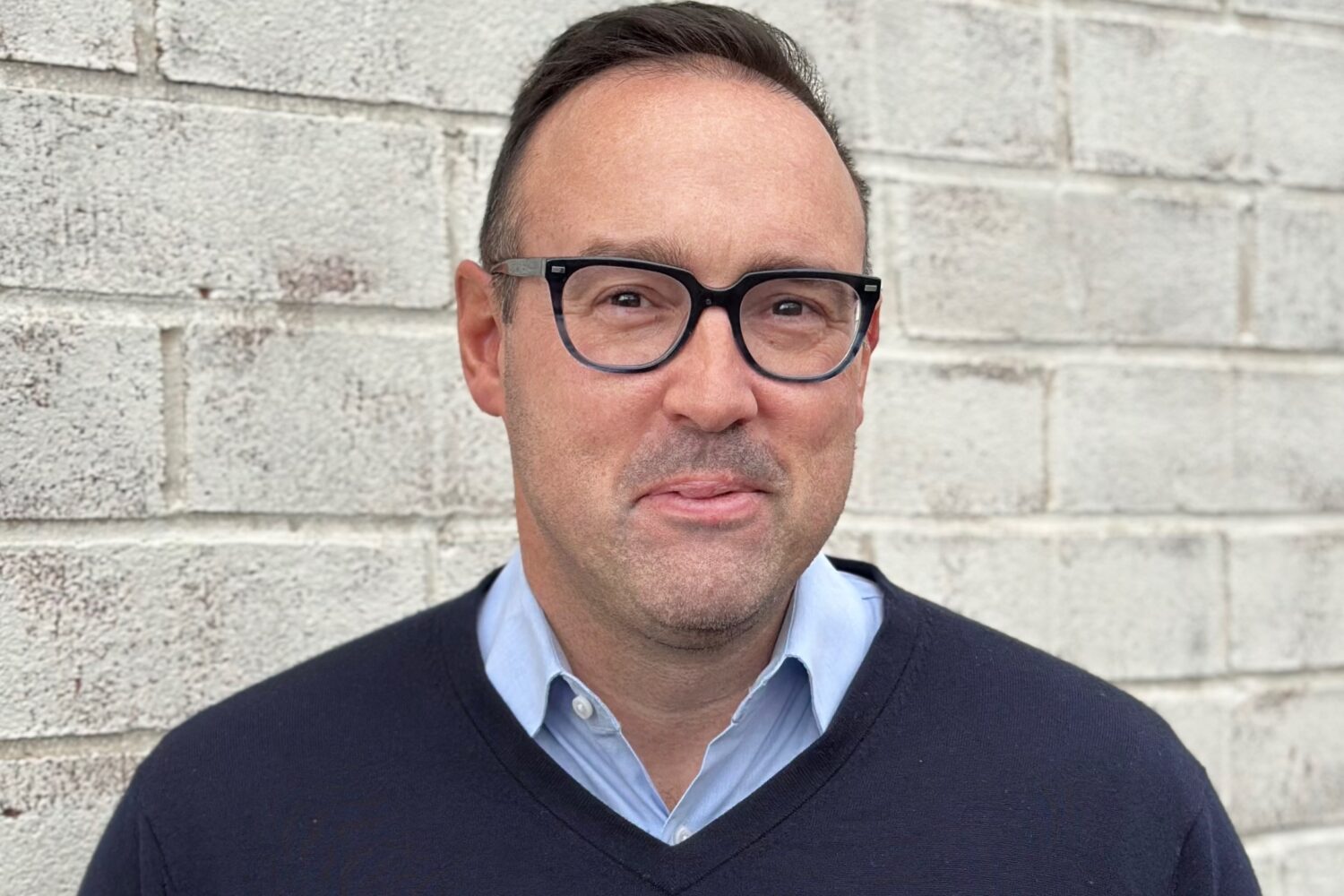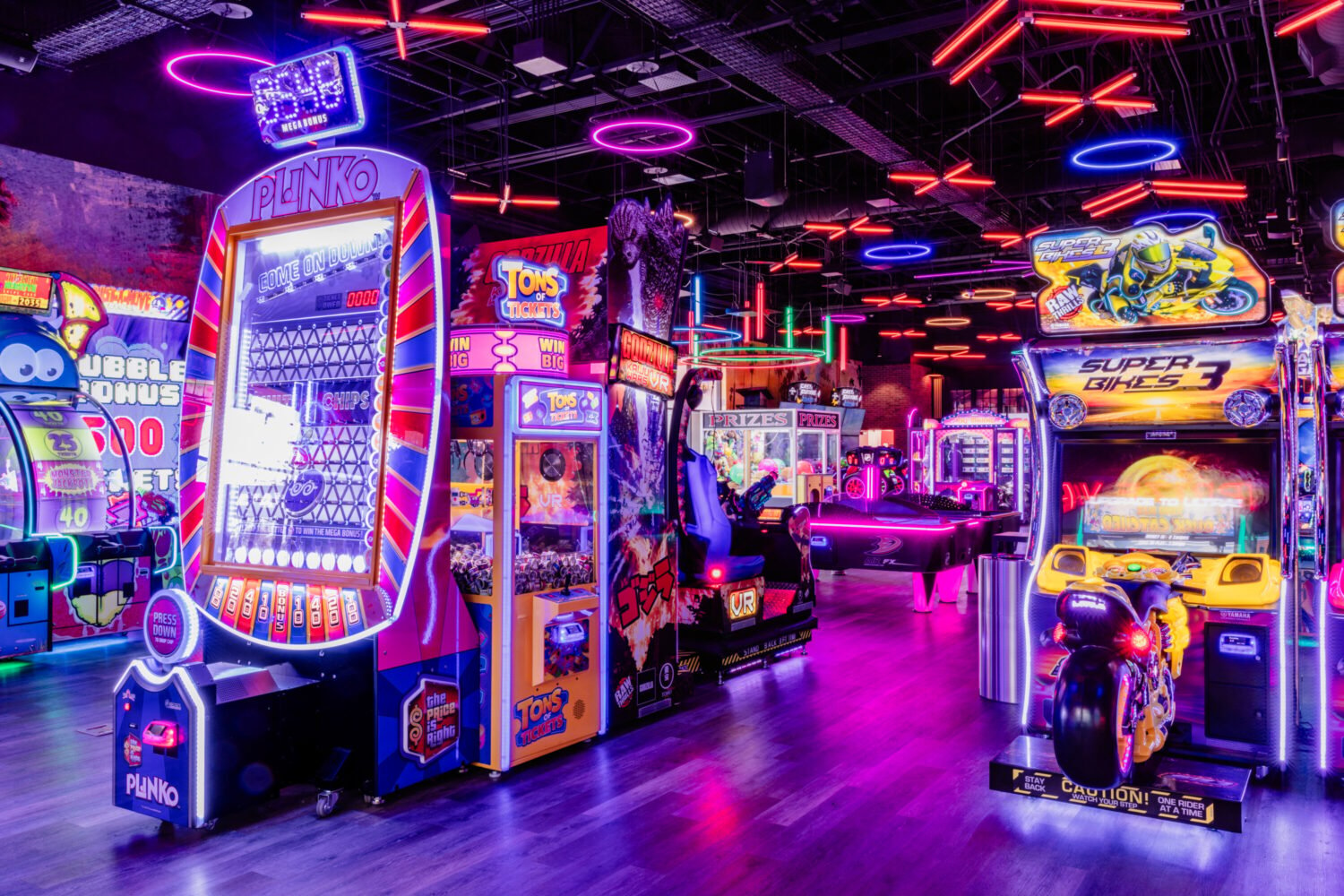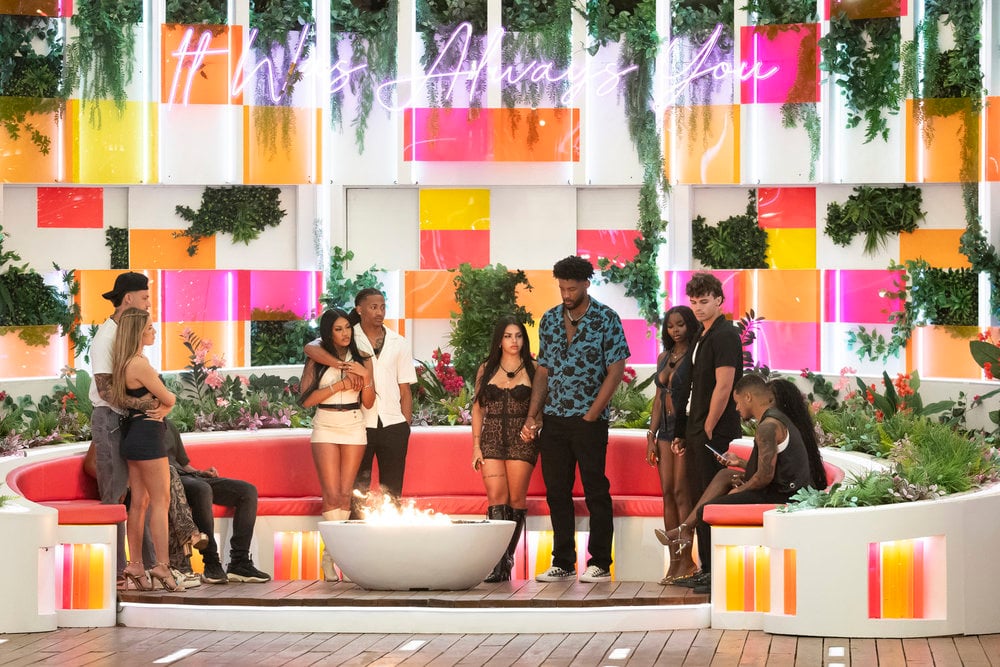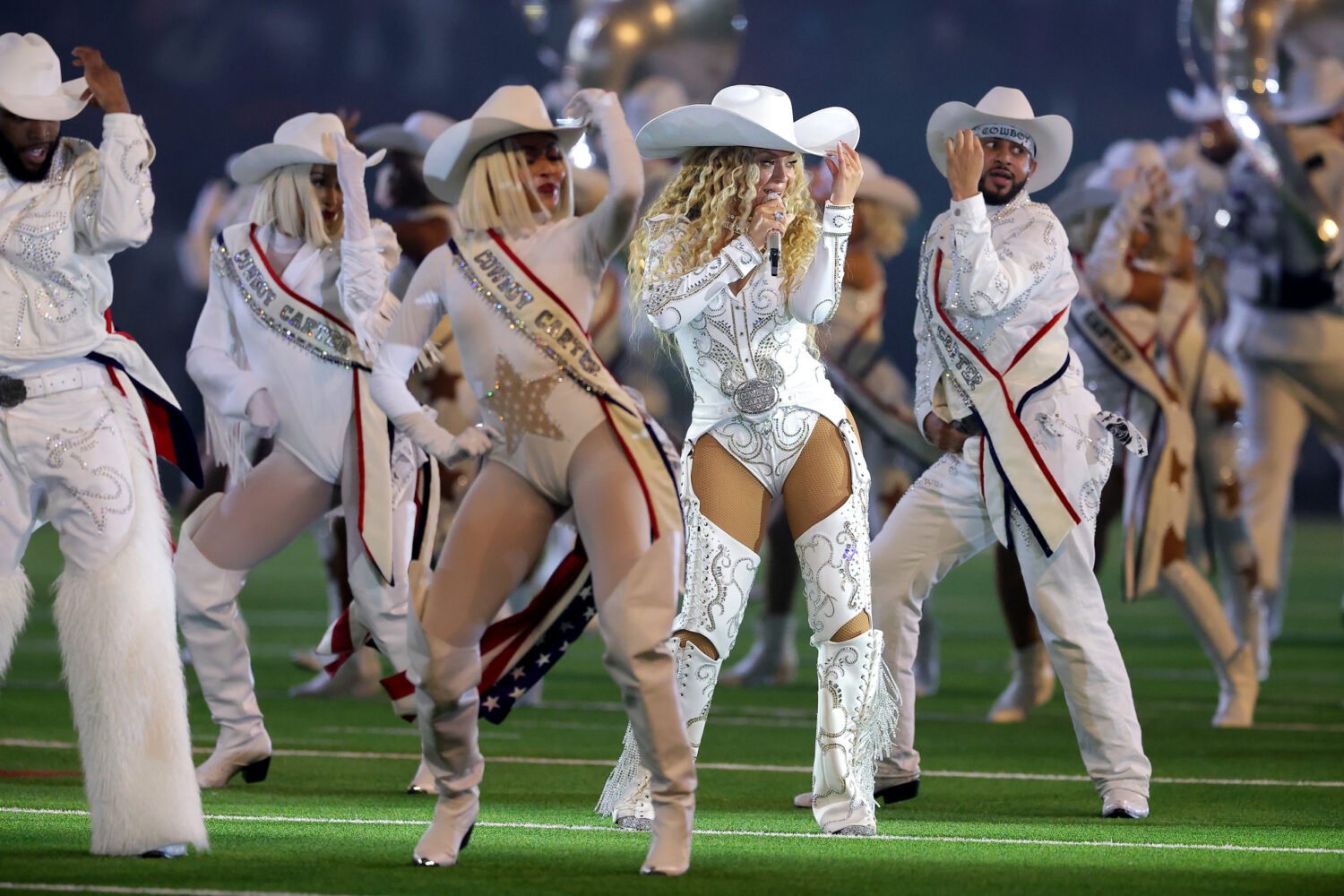On Tuesday night, what was once a tiny West Coast media experiment will take the stage at 7 p.m. at the Lincoln Theatre. The venture, called Pop-Up Magazine, began as a creative hub meant to fuse the best of various forms of media—radio, storytelling, news, music, photography, and animation—for a multifaceted way of experiencing what one conventionally thinks of as a magazine. Eight years, a monthly print publication, and a national tour later, the ‘live magazine’ born out of San Francisco’s Mission District has established a cult-like status among audio, biblio, and—dare we say it?—mediaphiles, everywhere. Washingtonian caught up with Pop-Up Magazine co-founder and Editor-in-Chief Douglas McGray, who originally thought of the project as a hobby, to get a peek at what is to be expected at the performance tonight.
So what exactly is Pop-Up Magazine?
Pop-Up Magazine is a live magazine, and what that means is that it’s a magazine performed on stage. It’s writers, radio producers, photographers, and filmmakers who present new stories—mostly reported stories—in all different kinds of vignettes together. What that means if you are in the audience is that you come in to a big, beautiful theater, you sit down, and you’ll see three things onstage: you’ll see a mic on one side of the stage, a set up for a band on the other side, and a big screen—a twenty or thirty foot screen—floating over the stage. The show runs about ninety minutes and there are usually about ten people in it. Someone will come out on stage, and they will begin to perform their story. [The story] might be something about politics, or science, or art, or food, or music, or pop culture. There tend to be stories about people, and sometimes they are surprising, and sometimes they are funny, and sometimes they are sad. But the story begins and then it starts to come to life on the screen—we’ll commission animation or photography or film—and as the person is narrating, the story will come to life visually above. For most of the stories we also commission a live score, so then our band plays something underneath kind of like a movie soundtrack. So you hear the story, you see it come to life on the screen, you hear this music underneath it. Typically the pieces start out pretty short and fast, kind of like the start of a magazine, and then it moves into the ‘feature well,’ sort of longer stories. Then everyone heads out to the lobby and sticks around so they can meet the audience, and the audience can meet each other, and if the theater has a bar, we hang out at the bar. It’s a fun night.
How did the production evolve?
It started really as a hobby. I was working as a writer writing long magazine stories for NYT Magazine and The New Yorker, and I kind of, almost accidentally, fell into doing stuff for This American Life. It was really interesting to me that radio was close enough to the world of writing that I knew that I could kind of slide into it, but I didn’t know any of these radio people, yet I knew all of these writers. It occurred to me that writers and filmmakers and radio producers and photographers are all in the story business, but often times the worlds are separate—film has film screenings, photography has gallery openings, writers have readings—and it occurred to me there might be a way to bring all these worlds together and make a show out of it. For the first couple [of shows] we rented a small theatre in the Mission in San Francisco. It was never intended to be anything more than that. But something interesting happened: it got really popular really quickly. It became impossible to get tickets. And we really fell in love with live as a medium. Pretty soon, we had moved from that little theater into a 2,700-seat theater.
It’s kind of interesting because on one hand you have this kind of old way of processing media in that you can only see Pop-Up Magazine live, you can only witness it once, and it is not recorded or filmed, but on the other hand you have this progressive fusion of all these different forms of media—do you see that sort of fusion as something that is going to become more and more popular?
Even today you think of a print magazine as being this very familiar format, but you can do pretty exciting things with photography and design that people don’t expect. With Pop-Up Magazine, one of the things we’ve found is that people are really excited—I feel this way too—about opportunities to get out and come together and be with community and see something that’s unusual. Something that’s not a movie, that’s not live music. It’s its own thing, it’s its own format, and it doesn’t… it’s not something that you can do every night. I think it feels special. And I think it feels more special because we don’t record it. That you can’t go rewatch it and you can’t send a link to a friend, if this is a story that you think is amazing and you’ll never forget you have to retell it, which I like.
When you know that you can only see something once you watch in a different way. You pay attention in a different way, and you can kind of get lost in something in a different way. You’re not distracted. It’s amazing to me, something that I didn’t expect, in a place like San Francisco or DC, you know people can maybe look away from their phones for like thirty seconds before looking back. But when we put on this show and the lights go down in the theatre, you look around the room and there isn’t a single glowing screen. As soon as it’s over everybody jumps back online, gets on Twitter, and talks about their favorite stories, takes photos of each other on Instagram and in the lobby—but there is that moment where everybody just sits in a dark room together and watches and listens as the story unfolds. It’s pretty magical.

This is the first time you are stopping in DC. The tour is only seven cities long. Can you tell me a little bit about why you chose to include Washington?
I’ve always wanted to bring the show to DC. I lived in DC for most of my 20s and worked as a journalist there—as a magazine writer— so, I’m still really fond of the city. I think it’s a great place for the show because there is a really rich media culture there. There are tons of people doing really interesting, important reporting, really interesting feature writing, a huge documentary film community, huge radio community, and a lot of people who are fans of all this stuff, and so it seems like a really natural place to make a show like this. Once we come to a city, one of the things that immediately follows is that writers and filmmakers and radio producers and photographers come to the show, and then they have ideas themselves to bring onstage and bring on tour with us. I love when coming to a city can be the start of a relationship with that city, and the start of a relationship with the creative community there. I don’t want to make any promises but I really want this show to be the start of putting down roots here. DC is such a smart crowd, and just full of curious people and people who are curious about the world. I think that our show is a really nice fit for that audience.
Who is going to be performing at the DC venue? Do different people perform at each stop of the tour?
The shows are all a little bit different. It’s a mix of stories that travel from city to city, some stories are in two or three cities and some stories are only in one city. One thing that I want to say is that, so often the story that just blows people’s mind’s is by someone they’ve never heard of before. Our shows are always a mix of really prominent people—the bestselling authors, filmmakers who have won Oscars and people who are on TV—and then people who are at the very start of their career, or people who have never been in front of a crowd like this. That is a big part of the culture of the show, in the same way that it is mixing all different kinds of media its mixing people who are really well known with people who will be new to most people.
What about you? Have you ever told a story with Pop-Up Magazine?
I have not. I think I spend so much time thinking about everybody else’s stories and—if you work at a magazine it will sound familiar—you have an editorial role and you live and breathe other people’s stories. I have not had time to do one of my own yet, but I probably will someday. It’s interesting because—and exactly zero people reading care about this—but I have kind of an unusual background as an editor because I spent most of my career as a writer and making radio, and now that I’ve I’ve switched over and I’m editing Pop-Up Magazine and editing California Sunday, I’ve sort of, at least for now, I’ve kind of made the full switch. I don’t really write anything except for my editor’s letter in California Sunday, and I just try and concentrate all of my energy on editing and on running the company.
Is there anything else you wanted to share about the show?
There are a couple of things that people don’t expect about our show. A lot of people, if they’ve been to something that they think of as a live storytelling night, they are used to people telling a lot of personal stories. And they are used to it being a pretty lo-fi affair, you know, somebody in a dark room or a dark bar with a mic telling a personal story. One of the things that is interesting about Pop-Up is when people come for the first time so many people say this to me in the lobby afterwards: “Oh, I didn’t realize like this actually is a magazine.” Because people are out reporting stories, and we’ll have profiles and dispatches, people who are telling stories about art and about war, but then also things that are just really funny. So, I think that quality is often times something that people aren’t expecting. And the other is that, it is a show. There is a screen with animation, with photography, with film, that that plays such a big part of it, and then five or six musicians onstage playing a soundtrack underneath the person who is telling a story. It’s just, its it’s own thing. Its unique and it’s its own thing.


